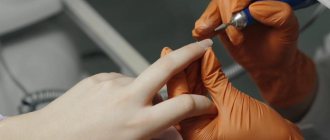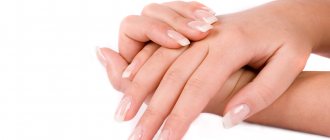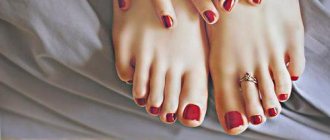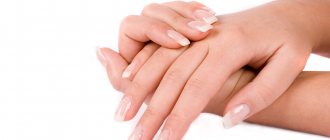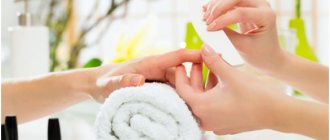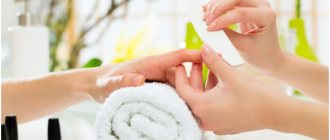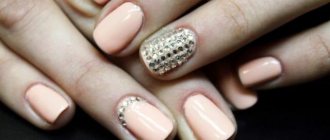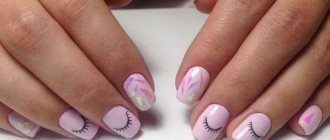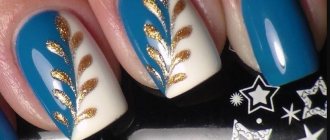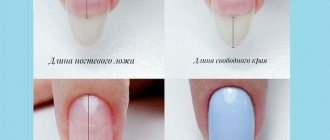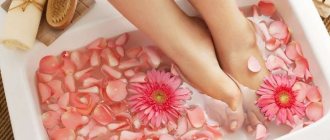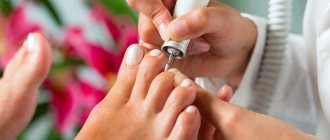How is an acid pedicure different from a regular pedicure?
Acid pedicure can be done both in the salon and at home. Regular sanding of dead skin and trimming cuticles may not be enough to make your feet look neat and attractive. Especially many problems arise with age. Therefore, acid pedicure is a good solution for many women. And now this technique is gaining increasing popularity.
Acid pedicure is a safe, painless and fairly quick procedure. It not only exfoliates the skin, but effectively fights corns and calluses. If you carry out the procedure regularly, you can get rid of problems and bring your feet to ideal condition.
The main difference between an acid pedicure and a classic one is that the skin on the feet is not cut off. Even the most problematic areas are processed without the mechanical impact of cutting tools.
During a regular pedicure, the nails are first tidied up (trimmed, filed), then the skin of the feet is steamed (the process takes up to half an hour), the skin is polished, the cuticle is removed (using special scissors, nippers) and finally a moisturizer is applied.
What happens if you do an acid pedicure?
Stages:
- care procedures for the nail plate
- feet are immersed in warm water for only 6-8 minutes;
- application of products containing fruit acids;
- exfoliated skin is removed using a polishing buff;
- feet are moisturized and nourished.
During the acid manicure process, even the cuticle reaches such a degree of softening that it can easily be removed with a buff.
Acid pedicure: features and benefits of the procedure
The undoubted advantage of fruit pedicure is the antibacterial effect without the use of rough instruments. During the procedure you will not experience any discomfort, it will neither hurt nor tickle.
The creams used for pedicure do not contain chemical components that could have a negative effect on the skin. Thanks to these properties, acid pedicure is prescribed to the most vulnerable groups: children, teenagers, pregnant women, people with diabetes.
Another advantage of acid pedicure is the large intervals between procedures. Fruit acids not only cleanse the feet of dead skin, but also slow down the process of re-hardening.
Attention! If you want to get rid of old corns, then to achieve the best effect you should carry out the procedure 2-3 times a month.
Thanks to the cumulative effect of an acid pedicure, your feet will look great for a long time.
Composition of the product
The main components of the products used are fruit acids.
First of all, it is glycolic acid, whose molecules are so tiny that they easily penetrate cells, fighting keratinization and other skin compactions. It separates rough parts of the skin, prevents the appearance of new ones, and also has antibacterial and anti-inflammatory effects.
Acid pedicure products may also contain lactic acid.
Contraindications
Acid pedicure is a soft, gentle procedure. Due to the creamy consistency of the products used, experts call it “cream”. As a rule, there is no allergic reaction to Liquid Blade. If the drug is based on glycolic or hydroxyacetic acid, then a chemical pedicure will be safe even for children and adolescents.
If your feet have small cracks, scratches, or areas of fungal infections, then using this product for pedicure is contraindicated. Fruit acid is a harsh chemical. It can damage the skin and cause inflammatory processes in healthy areas of the skin. It is used only to remove dead layers of the epidermis.
In any case, before using the drug, you should carefully read the instructions and conduct a rapid test for allergic tolerance to the components.
In what cases is an acid pedicure indicated?
Perhaps it can be recommended to almost everyone. You should especially pay attention to it if you have the following problems:
- a large number of growths, which increases even more due to aggressive influence (trimming or hardware pedicure);
- the skin has difficulty healing after a regular pedicure; when exposed to fruit acids, regeneration is significantly accelerated;
- presence of calluses;
- ingrown nail;
- yellow skin on soles;
- excessive sweating of the feet.
Acid pedicure has a minimum of contraindications. Even pregnancy and childhood are no exception.
Indications for use of acid pedicure
No matter how much you would like to see the amazing effect of a fruit pedicure procedure, it is not suitable for every girl. Firstly, everyone has different skin, which can react in a special way to the components of the product. Secondly, on smooth, problem-free feet there will be no “wow” effect, since there are the following indications for the use of acid pedicure:
- the presence of an ingrown toenail or ingrown toenail problems in general;
- profuse sweating in the feet area;
- rough skin, peeling and dryness;
- excessive thickening of the skin, constant formation of corns;
- calluses and dry cracks;
- the appearance of fungal diseases of the skin of the feet or nails.
So, if the above points do not apply to you, then perhaps you should not resort to aggressive procedures. If one of the indications is present, you can safely use the fruit composition for pedicure.
Advantages and disadvantages
- Safety. No blades, scissors or wire cutters required. Everything is done using a special creamy product and a gentle file.
- The whole process will take no more than 40-60 minutes.
- The product acts on the skin very delicately and at the same time effectively. With each procedure, the area of new keratinized areas will decrease until the problem disappears altogether.
- The product contains only natural ingredients, the main ones being fruit acids, which practically eliminates allergic manifestations.
- The cuticle will look more well-groomed each time, and hangnails will disappear.
- Affordable price. Everyone can afford it, both at home and in a salon.
But, despite the undeniable advantages, acid pedicure, like any procedure, has its disadvantages:
- if there are too rough areas of the skin, the acidic product may not cope with them the first time - several procedures will be needed at intervals of 10-15 days;
- Despite its safety, the product still has some aggressiveness, so the exposure time should be selected strictly individually;
- It is better to carry out the procedure in beauty centers;
- Do not do an acid pedicure if there are injured areas of the skin, wounds, scratches, wet calluses, irritation;
- An allergy test may be required before a pedicure.
Contraindications for acid pedicure, in addition to injuries and irritations, are any infectious diseases, fungal infections (mycoses), allergies.
The essence of the procedure
Despite the rather scary name, this procedure is one of the most gentle methods of caring for the skin of the feet. Its essence lies in applying a special solution based on vegetable and fruit acids to the feet. These include glycolic and hydroxyacetic acids. They penetrate into the deep layers of the skin and dissolve rough areas in a short period of time. After some time, they can be easily removed with a regular nail file.
There are no dangerous chemical compounds in the product. Therefore, it can be safely done by pregnant women, nursing mothers and teenagers. In this case, the solution not only dissolves roughened areas, but also slows down the further process of tissue keratinization. Therefore, you will not have to repeat the procedure as soon as after other types of pedicure.
How to perform an acid pedicure at home
Performing a pedicure in beauty centers is the ideal solution. But you can also try performing the service at home; you will need an active component with fruit acids, also:
- disinfectant (cream or spray);
- cotton swabs or cosmetic spatula;
- cotton pads;
- cling film;
- napkins;
- soft file;
- abrasive file or pedicure machine;
- moisturizing cream;
- nail polish;
- nail polish remover.
The procedure involves the following steps:
- Inspect the skin and make sure there are no damages.
- Thoroughly clean the skin of your feet using a disinfectant and wipes.
- Soak your feet in the bath with the prepared solution, then wipe the skin dry.
- Using a cotton swab or spatula, apply the gel to the skin.
- If you accidentally get the product on your hands or body, wash it off immediately with water. There is no need to apply the gel to the inner arch of the foot: as a rule, there are no rough areas there. Cotton pads soaked in the composition are applied to the most problematic areas.
- “Pack” the feet in cling film and wait for the time specified in the instructions.
- Remove the film, remove the gel with a napkin, and remove the softened layer of skin with a soft file.
- Sand problem areas with an abrasive file or pedicure machine.
- Wipe your feet with an antiseptic and apply a moisturizer.
What is the essence of the procedure
The fruit-acid solution is applied to rough skin areas, after which the dead particles are removed with cosmetic instruments. The solution and additional effective agents added to the bath by the master quickly and easily eliminate dry skin and help soften rough areas of the foot.
Like any other method of care, acid pedicure must be applied correctly so that all incoming manipulations give the expected result. If the skin of the feet has scratches, cracks or other damage, then a chemical pedicure cannot be done. Acids actively affect them, corroding and causing irritation. The skin must be absolutely clean and healthy, free from fungus and other infections. Otherwise, you can get burned and then take a long time to heal.
Everyone who tried an acid pedicure was convinced of a positive result. After the procedure, dead skin cells are removed, their improper reproduction is slowed down and the restoration of rough areas is accelerated. Calluses and other imperfections of the feet are softened, regardless of the degree of neglect.
There is nothing complicated about the chemical method of foot care. Everyone can perform a fruit-acid pedicure at home on their own; you just need to find out in advance what tools and products are needed for this procedure.
Choice of product
When ordering gel in online stores or buying it in specialized salons, you should pay attention to the volume. For personal use, a 60 ml bottle is quite enough, because the product consumption is very small. The main thing is to carefully study the composition. The basis of the product should be fruit acids, and all other components play only a supporting role.
Acid pedicure is an indispensable procedure for combating calluses, corns, sweaty feet and other unpleasant phenomena.
Trim pedicure at home
It is recommended to perform the procedure once every 10-14 days at home, depending on the load on the legs. This intensity will allow you to properly care for the skin of your legs and feet, preventing the appearance of cracks and ingrown nails. Between the full procedure, it is recommended to sand your feet every 3-5 days with a coarse file to remove rough skin.
Classic pedicure is easy to learn. To do it as efficiently as possible, take care of good tools and nail files. This is already half the battle. It will take you about an hour to complete. You can turn on your favorite TV series.
Let's look at how to perform a classic pedicure step by step:
- In a classic pedicure, steaming your feet is mandatory. To do this, immerse them in a bath of water at 37-40°C for 10-15 minutes. First add 1 tbsp to the water. salt, 1 tbsp. soda and a little liquid soap or shower gel. Baking soda will additionally soften and whiten the skin, and salt will strengthen nails and relieve swelling. You can also add a few drops of essential oil, such as tea tree, lemon, rose or lavender, to the water.
- Use a pusher or an orange stick to push back the cuticle and clean up the pterygium from the nail plates.
- Use pliers to remove the length of your nails. Do not cut it very short, the recommended length is 2-3 mm.
- By this point, your nails will have dried a little, so you can shape them with a nail file. With a rectangular shape, it is still better to round the corners a little so that they do not cling to socks or tights and do not grow into the skin.
- Use the sharp end of an orange stick to remove dead skin from under the nail plates and in the lateral sinuses. Do this very carefully so as not to injure the nail.
- Use nail scissors or cuticle cutters to cut the cuticle. Professional craftsmen recommend removing only rough, dead skin, without fanaticism. The cuticle protects the nail along the perimeter, and if it is cut very short or injured, pockets of possible infection will form with a high risk of inflammation due to contact with shoes, dust, and floors.
- Now let's move on to processing the feet. Using a grater or coarse file, remove all rough skin in the direction of the skin lines. It is recommended to do this not on wet, but on barely damp skin. If it dries out, just moisten it a little with your hand. A grater or file will remove the rough areas in pellets. If there are cracks on the legs, then they must be processed with a grater strictly along the groove.
- Apply a coarse scrub to your feet and massage your feet and upper parts. Rinse with water.
- Apply a decorative coating to your nails with gel polish, shellac or regular nail polish. If gel polish is used, then leveling is not necessary. A thin layer of classic base will be enough. Before applying it, treat your nails with a dehydrator and an acid-free primer for better wear of the coating. It is better to take the top without a sticky layer. Many masters recommend using a single-phase polish for pedicure, combining a base, gel polish and top coat at the same time.
- Apply a light cream for quick absorption and cuticle oil to your feet. Give a light massage to relax your legs and improve the effect of the cosmetic product.
